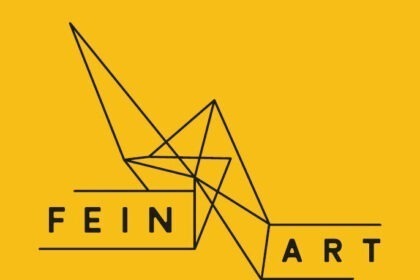Editorial | Fall 2023
I am pleased to introduce FIELD Issue #25 (Fall 2023). This issue features Karen van den Berg’s analysis of the public scandal over antisemitic imagery that surrounded documenta 15 (2022) in Kassel. Documenta 15 was developed under the direction of ruangrupa, a Jakarta-based artist collective “rooted in principles of collectivity, communal resource sharing, and equal allocation”. As part of their curatorial initiative ruangrupa invited over a dozen other global art collectives to create their own programs. The result was a sprawling exhibit which included 1500 participating artists and activist. Out of this mass of exhibitions, installations, performances and public projects a mural by Taring Padi (People’s Justice) received wide media attention due to its inclusion of antisemitic imagery. The mural referenced the genocide of over a half million Indonesia leftists by the Sukarno regime in 1965 and appears to refer to the claim that some historians have made that these killings were undertaken with the knowledge of the Israeli Foreign Ministry and Mossad, who later sought to cover up their extent, and continued to provide weapons and other support to the subsequent Suharto regime. The mural featured inflammatory images of Mossad officers and other Jewish figures in conjunction with Nazi symbolism. The response in Germany was immediate, with documenta 15, and ruangrupa in particular, being accused of complicity with antisemitism. The mural was removed, but a number of German political figures demanded further investigations of documenta, with some calling its future into question. Many of these debates coalesced around a critique of ruangrupa’s collaborative and “horizontal” curatorial approach, as well as the gesture of incorporating work from a wide range of artists and groups from the Global South. It is this key discursive pivot that Van den Berg addresses in her essay. FIELD doesn’t generally devote a great deal of room to activities in the institutional artworld of biennials, museums and galleries, since these spaces already enjoy a high level of discursive privilege and media attention. However, the issues that emerged in debates over documenta 15, which incorporated the work of a number of activist groups, have clear resonances with our own editorial concerns.
FIELD‘s Fall 2023 issue also features my own examination of James Agee and Walker Evans’s book, Let Us Now Praise Famous Men. While it received relatively little attention when it was first published in 1941, due to the onset of WW II, their book has since emerged as a central document of the social documentary tradition in the United States. In the past decade it has re-emerged in the writing of two figures who have played a key role in the development of new theories of aesthetic autonomy: Jacques Ranciére and Walter Benn Michaels. In this essay I return to Agee and Evans’s work to explore the complex points of tension that emerged in their efforts to operate across boundaries of racial and class difference, as well as its relevance for current debates over the nature of socially engaged art and the aesthetic. In addition, our fall issue features the transcript of a roundtable conversation among several young curators and artists whose research on socially engaged art practices was supported by FEINART, an EU-funded project that links leading university programs in the UK, Iceland, Poland, Italy, Sweden, Greece and Germany. Their exchanges focus on a number of key issues related to the development of engaged art practice today, including the relationship between art and “revolutionary” change, the unique forms of insight that might be generated by engaged art, the role played by prefigurative experience in these practices and more. The exchanges that unfolded among these eight scholars provides a useful index of the concerns and challenges faced by emerging figures in the field. Finally, this issue features reviews of two new books in the area of engaged art scholarship. These include Mikkel Bolt Rasmussen’s review of Jacopo Galimberti’s Images of Class: Operaismo, Autonomia and the Visual Arts (1962-1988) (Verso, 2022), an important study of the interrelationship between workerism and the autonomia movement in Italy and cotemporaneous art practices, and Kim Charnley’s review of Kuba Szeder’s The ABC of the Projectariat: Living and Working in a Precarious Art World (Manchester University Press, 2021), which examines the complex class dynamics and divisions of the institutional art world.











